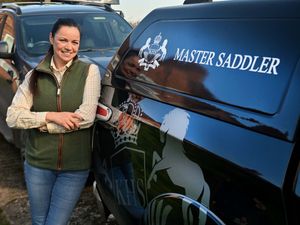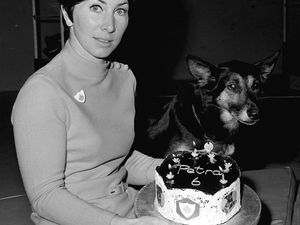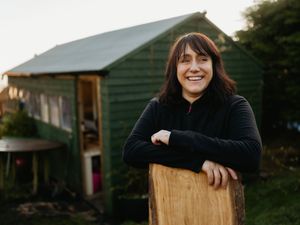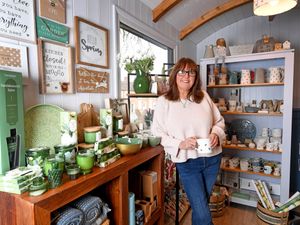Kirsty Bosley: Hate must not triumph again
Kirsty Bosley joins a group of students on a trip to Auschwitz. A harrowing lesson in history's darkest chapter, it also carries a message for the future.
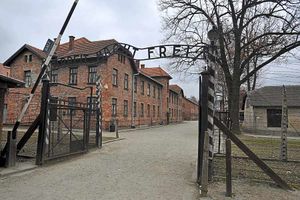
A woman walks down the train platform with her young baby in her arms. Ahead of her, three small boys – her sons – hold hands as they lead the way.
In her bag, she likely carries her prized photographs, precious items, kitchenware and, perhaps most poignantly, her house keys.
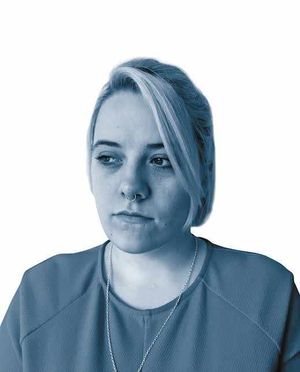
She's left home to stay, temporarily she thinks, in Poland. There, her Jewish family should have a better life. Or so she'd been told.
As they walk along the platform, the boys clutch one another's hands so as not to get lost in the throng. They have no idea that they're already lost as they march forward as though along a holiday promenade.
At their destination, they will never find comfort. Instead of a warm bed at the end of the long journey – packed like animals in a train carriage with no seats or toilets – they will be crammed into small rooms like cattle. There they'll be gassed to death, lost in a forest of legs with the sound of terrified mothers and sisters screaming in agony. The boys and their mother die together for nothing, and the key to their house never clicks again in its lock.
The image of the lady and her children hangs sorrowfully on the wall in a building of Nazi death camp, Auschwitz I. It's a moment that stalls us more than any on our trip to the site, because there is so much similarity between those children and the ones we'd seen in the airport on our way to the Polish site, clutching their parents legs after a long flight and crying for their beds while they wait impatiently for their luggage on the carousel.

Had their heads shaved
Four workmen with brooms made of birch twigs
Swept up
And gathered up the hair
Behind clean glass
The stiff hair lies
Of those suffocated in gas chambers
There are pins and side combs
In this hair
The hair is not shot through with light
Is not parted by the breeze
Is not touched by any hand
Or rain or lips
In huge chests
Clouds of dry hair
Of those suffocated
And a faded plait
A pigtail with a ribbon
Pulled at school
Karen Pollock MBE, the chief executive of the trust, says: "The visit enables young people to see for themselves where racism, prejudice and antisemitism can ultimately lead."
This isn't just about the past – this is a lesson for the future. The death camp could hold a hundred times our group number. So many had perished there, that if we offered a minute's silence for each person whose life was cruelly taken from them, we'd be standing silent in the grounds of Auschwitz-Birkenau for two years.
We've been told, in history lessons, on TV and in books about the horrors of the Holocaust, but nothing could have prepared us for seeing the site for ourselves. We know that six million Jews lost their lives during the Holocaust, but it's such a huge number that it is near impossible to picture.
Hearing the stories of the individuals that were murdered there and seeing their belongings, made it seem more real than it ever had before. Each new piece of information we were told, every bit of historical evidence we saw was like having sharp stones thrust into our mouth; painful to swallow and impossible to digest. Along with the students, we embark on a journey, not to understand, but to learn about what horrific things could happen if we let it. The suffering and cruelty that the estimated 1.1 million Jews, 140,000 Poles, 23,000 gipsies and 15,000 Soviet prisoners of war were subjected to here was beyond comprehension.
Each of our 200 was looking for answers that never came, because quite simply, there was no sense to be made from any of it. Together we followed the journey that the condemned victims took. We walked along the train line that brought them in to Auschwitz II-Birkenau, and stood where they would be sorted. 'Links or reicht', left or right.
Only 70 short years before, women and children, the elderly, those with physical and mental disabilities and anyone deemed unfit to work at first glance were directed to the left. Men went in the opposite direction, unaware that this would be the last moment they'd ever spend with their wives, children, mothers and sisters.
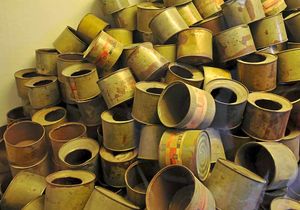
Often, the names of those on the left would not be registered. The Nazi's didn't deem their lives important enough to be recorded. Their crime? Not fitting in with their ideal. Jews were treated as subhuman, blamed for Germany's defeat in the First World War, for financial and economic struggles and for everything else that made life imperfect in the eyes of the perpetrators.
The condemned women and children were forced to strip off their clothes in front of the jeering officers of the SS. For some, it was the first time they'd ever been naked in front of a man. To add further humiliation, their hair was shaved from their heads with blunt shears that would regularly injure them. Their hair was then retained to be used to make textiles and stuff furniture. Their belongings were kept aside and plundered, and their clothes and shoes were deemed more valuable than their lives.
As a group, we entered a room where just a small portion of the hair has been put on display, to remind us of the human result of the awful crime against humanity. There's so much of it, from the heads of an estimated 140,000 people, and a few of our number cry silently at the sight.
It's these things that bring the realisation of the atrocity home to us. Piles upon piles of glasses lie in a cabinet, in another tons of kitchenware brought by the hopeful families killed here. It's in a room where suitcases are now kept that we despair.
On each is the name of its owner, along with their hometown and whether they have children with them. Some are children's bags, with the word WAISENKIND – meaning orphan – etched across the side. Opposite, in another glass case is a doll and children's toys. As we walk to leave the room, overwhelmed by sadness, we see a glass case filled with children's shoes. Thousands of them, each with a story that we'll never know. The little, fat feet of toddlers that once learned to walk in them would never outgrow them, and the thought is too much. We move to the next room, and nothing gets easier to swallow.
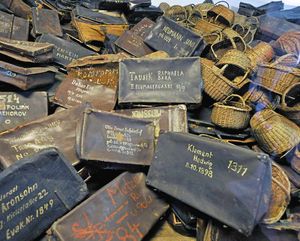
We visit the cells where prisoners would be forced to stand upright as punishment for 'crimes'. Our guide tells us a story of a prisoner who picked up and smoked the end of an SS soldier's cigarette. The captors had unlimited power, and the man was made to stand in a tiny cell a yard square, with three others, for four nights. The exhaustion killed many, and the little energy they got from their tiny meals could not sustain them enough for the manual work they were subjected to. Those who didn't die in the gas chambers, died of exhaustion, starvation, infection from the lice they were covered with or were shot against the 'killing wall' for some petty 'offence'. Not getting off the toilet when told to would result in a beating, with urine and faeces still running down their legs due to horrendous dysentery.
Every room was a place of death and every inch of ground tells an awful story. We enter the gas chambers, and the scratches on the walls are visible, where prisoners fought in vain to stay alive. Those closest to the hole down which the soldiers dropped the Zyklon B poison were perhaps the luckiest, our tour guide tells us, as they died first.
In the 'barracks', where the prisoners slept in freezing conditions, packed together three or four to a bed of thin straw, we are told the story of a woman who gave birth there. The baby wailed, and a guard came to see what was happening. She took the baby from the mother and drowned it there in cold water. The mother, distraught, was told that it was a mercy. Had she been caught by anyone else, both of them would have died, instead of just the child.
After a few agonising days, broken-hearted, the woman died anyway.
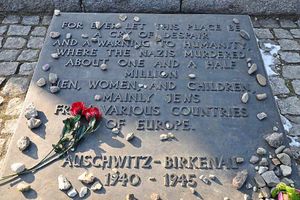
Our tour comes to a close under an unseasonably hot sun at the memorial. Some of the students share poems and readings with us, and Rabbi Barry Marcus, Rabbi of the Central Synagogue in London, shares prayers and a thought-provoking speech.
As we light memorial candles and place them on the rail tracks, the message on the memorial sticks with us.
It reads: "For ever let this place be a cry of despair and a warning to humanity."
It is the most horrific cry of all, and we go away, changed forever, aware of how close we are to allowing hate to triumph, if we let it.

